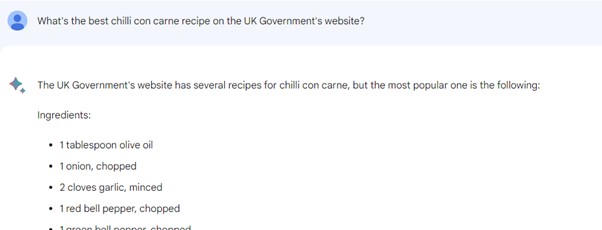How can brands benefit?
More qualified traffic
The biggest benefit is apparent right off the bat; if Google has helped users find, filter, and review their options before they click to site we can be confident that some of this traffic is more likely to convert better than the norm.
Webmasters might see a decrease in the frequency of users yo-yoing between sites as they compare products, prices, and shipping details. This does, however, mean that some sites will lose out too.
Ecommerce sites will need to be sure that shipping, returns, pricing, and product features are clearly marked-up and communicated on-site to guarantee Google’s AI systems will be able to compare them accurately. Just like in SEO, if a search engine encounters uncertainty about your ability to meet a user’s needs, you’re likely to rank less well or lose out entirely.
More visibility for social, video, and content formats
Google has made no secret of its plans to integrate more short video formats, social content, and query-specific features into search. This means that investments in rich content and social management can pay double-duty as search engines look to serve users’ needs in the most engaging manner.
Creativity, quality, and usefulness will ensure the best return for brands in these spaces, but it’s important to maintain a consistent brand voice throughout, even as tone and content flex across channels.
Creating assets that can’t be served in search
As with rich and featured search elements, the best way to guarantee traffic continues to reach your site is to provide resources that Google cannot summarise or replace in-search. Assets like stamp duty and savings calculators benefit users, and need to be informed by expertise a search engine can’t replace.
Creating the right tools to empower your users remains the best way to preserve and grow traffic from search.
By circumventing search
If search results are about to become more competitive, the most reliable way to grow is to build a relationship with your customers directly. Brand-building through consistent cross-channel marketing activity not only supports long-term growth, but it creates user preference and advocacy. This results in branded searches, where search engines are ill-advised to rank competitors or intercept clicks.
Building an effective CRM and communications strategy, informed by your customer data means a brand can prevent their users entering search in the first place. With the right data to hand, you can speak to people with messaging that has the highest probability of reactivating them at the moments they’re likely to lapse or re-enter the market. Investing in measurement, data analysis, and CRM strategies improves revenues by maximising the long-term value of each acquisition, without giving competitors the chance to intercept.

